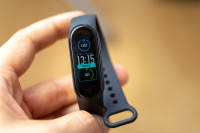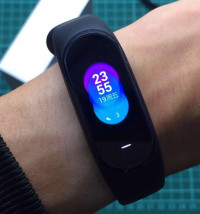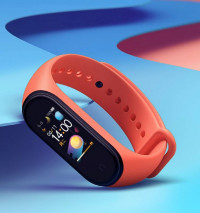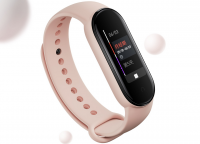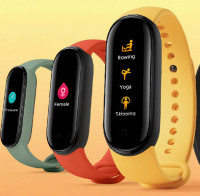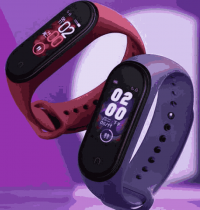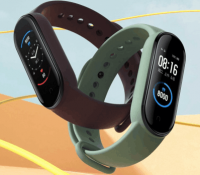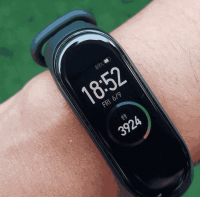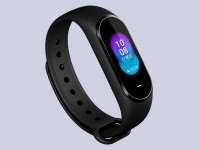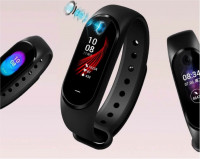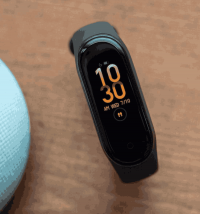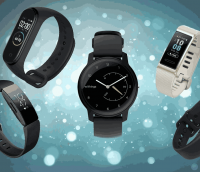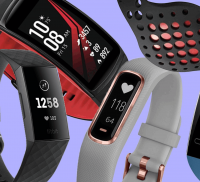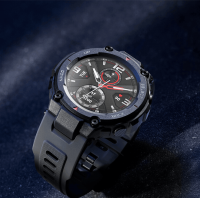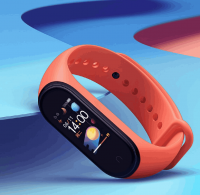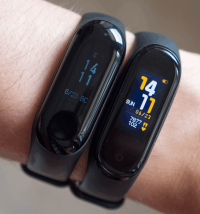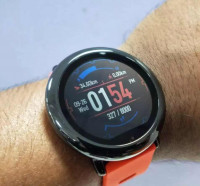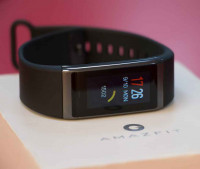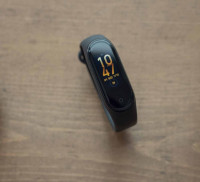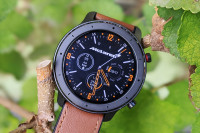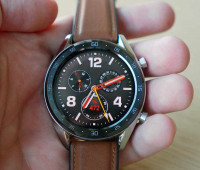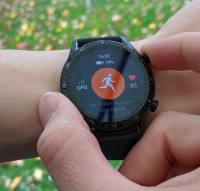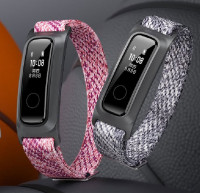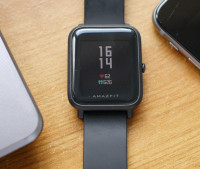Amazfit Verge review
OUR VERDICT
Fitness watches usually don’t usually come cheap, but the Amazfit Verge costs less than most of the competition, despite packing a GPS, a heart rate monitor, call receiver functionality and much more.
+FOR
Fun, light design
Bursting with features
Excellent price
-AGAINST
Interface needs work
No resistance training tracking
Music controls are poor
What if we told you that a smartwatch loaded up with a heart rate monitor, GPS, color OLED screen, dual-core processor and 5-day battery life could be had for less than $160?
If you’re familiar with smartwatch pricing, you’d probably tell us to get outta town! A year ago, we’d have marched on, but it’s 2019 and Xiaomi backed smartwatch maker, Huami, has delivered all of that and more in the Amazfit Verge.
Huami has eased into its stride when it comes to launching affordable smartwatches like the long-lasting Amazfit Bip and the Amazfit Stratos. In the Verge, it looks like the Chinese company has done it again, delivering a smartwatch that sits pretty in the middle.
Amazfit Verge price and release date
Available now in the US and Australia officially, and on import in the UK, unofficial pricing starts from around £105, with official prices being $160 and AU$199.
When compared to the like of the Apple Watch 4 or Samsung Galaxy Watch, it’s price is really compelling, despite the fact it features both a heart rate monitor and a GPS - most sub $200 smartwatches pack either one or the other.
Key features
Like its name, the Amazfit Verge doesn’t really make much sense. It packs way more features than a smartwatch costing this much should, and crams it all into a fun looking, if slightly duplo-like body.
The screen is a circular 1.3-inch 360x360 AMOLED panel, slightly recessed within an IP68 water and dust resistant casing. The watch’s two-tone finish looks fun, pairing dark and light grey off against one another in the version we reviewed, with the rubber strap taking on the darker tone, keeping things classy.
The Verge’s design also features punchy red accents, dotted around the clock face at 12, 3, 6 and 9 o’clock. The sole button, located on the watch’s right side also color pops nicely.
Interacting with the Verge is a tale of swipes and taps, and the story is illustrated with some fun graphics that visualize the weather and other UI elements. A handful of watch faces can also be accessed with a long press of the main screen, there’s a simple to navigate settings menu and when paired with an Android smartphone using Bluetooth, it can even act as a phone call receiver/speaker combo too.
What really sells this watch is the battery though. Huami reckons the Amazfit Verge will keep you going for five days - a bold claim indeed.
Design and screen
The Verge isn’t too big or bulky, and neither is it heavy at just 46g. Its featherweight form can be attributed to its body being made of plastic, matched with a light rubber strap - none of that premium, weighty metal link or Milanese loop business.
The watch’s two-tone color scheme is fun, with both dark and light grey portions on the version we reviewed, with availability in white and navy blue as well. The screen is slightly recessed, which adds a bit of protection, and in our month with the watch, there are no signs of wear on either the body or the display - mightily impressive!
In addition to being life-proof, the IP68 water and dust resistant casing will keep it alive in showers and mild submersions too.
Punchy red accents dotted around the clock face at 12, 3, 6 and 9 o’clock also add flair, as does the color popping red button, located on the watch’s right side. Ultimately, the design balances simplicity, attractiveness, and comfort really well - it’s not trying to be too premium, it’s trying to be clean and well put together, and it succeeds at both.
The screen is a 1.3-inch 360x360 AMOLED panel. Plenty sharp and plenty colourful, it pops nicely with the default watch face elegantly mirroring the red accents of the watch body.
Viewing angles are strong, there’s an always-on display function, which enables at-a-glance time-telling, and gesture activation is on-board too, brightening things up when you elevate the watch with a wrist rotation.
The watch also has an auto-brightness option, which can be turned on or off in the settings, and calibrated to be as aggressive as you want it to be.
Interface
Thank goodness for the latest Amazft Verge software update; while stability wasn’t so much of an issue in the last release of the Amazfit Verge’s OS, firing it up was a very manual process - you had to push the physical button before interacting with the screen.
The latest release, however, adds a double tap the screen to wake feature, making firing it up infinitely more intuitive.
Before we get into that, let’s step back a few paces - Huami’s proprietary smartwatch software powers the Amazfit Verge, and is a seriously mixed bag.
From a pure functionality point of view, it covers the bases, flourishing in a couple of key areas. The illustrations for example throughout the UI are large, finger-friendly and easy to interact with and understand. The interface is also really intuitive - home screen, quick settings, notifications and apps - all accessible by swiping in various directions.
Where the UI falls down is finesse. Occasional UI swipes and double taps go unnoticed, and a lot of translations are patchier than a calico cat, though this has also been improved since we first got the watch. What’s more, there are a few tools missing for exercisers - no seconds counter in the timer app for example.
Fitness tracking
The tracking also is hit and miss. On the one hand, automatic exercise detection is an awesome addition. Mistaking a 25KM train journey for a speedy walk, however, less so.
When you walk for four minutes, it prompts you to activate tracking mode with a vibration, a feature that can be turned on and off. If you’re actually out and about and walking, the tracking was accurate in our experience with the watch.
Where it falls down is the fact it doesn’t stop tracking when you jump on a train or in a car. There is a feature that can be fired up to stop tracking when it detects you’re stationary though, which is a plus.
The range of exercise modes is also a bit less comprehensive than some of the competition from Apple and Samsung. There’s no rowing mode for example, and more frustrating, in spite of surprisingly accurate indoor running tracking, there’s no gym mode to monitor heart rate when doing things like free weights or circuit training.
This firmly relegates the Amazefit Verge to a singular cardio smartwatch when it comes to sports - with one exception: interval training, thanks to a handy feature within the smartphone app that lets you customize interval training times.
The watch's optical heart rate monitor does an okay job. Mid-training, it can get thrown off, but stationary tracking is more on the money. We found it was on average, about 5-10 beats per minute fast.
Another thing the Verge tracks is sleep, and it does so very well. There are two reasons for this - the Verge is light, and it has great battery life. Coming from the Samsung Gear S3 as our daily timepiece, a more solid, premium, metal smartwatch - one we often took off our wrist in a half daze in the middle of the night due to discomfort - the Verge is comparatively unnoticeable.
In addition, unlike the Gear S3, which has two-day battery life, the up to five-day battery life of the Amazfit Verge meant we didn’t end up charging it overnight, but instead, did so in the day at work, just a bit more often than once a week.
Wearing it for more sleeps meant the sleep tracking data it pulled was more complete, and it also seemed accurate too when used in conjunction with other trackers. A feverish night, it detected just one hour of deep sleep and seven hours of light sleep. A good night’s sleep recorded just under four hours of deep sleep, and four hours of light sleep.
Music and calls
Sadly, music handling feels like a bit of a hack job on the Huami's Amazfit Verge. There are two ways to control your tunes - one is through a widget in the notifications panel, accessible with a swipe down of the UI.
This specifically controls music being played on your phone, and it works with third-party apps like Spotify. Sadly, it delivers a horrifically laggy user experience - press the volume down icon, wait, wait some more and the volume may drop, or it may not - kind of like an unreliable echo.
Then there’s the music app. This controls MP3s you load onto the Verge itself, which may be handy for runners who want to leave their smartphone at home. This works a little better, but we never really used it because we're sold into music streaming services.
Making a call using the Verge as a receiver fares a bit better - and there's only one 'phone' app which is a plus when compared to the two music players. The watch pulled our contacts from our Android phone, which took some time initially, after which they were accessible without any delay. Having said that - good luck if you want to call your mate Zorba or Zain. No search function means finding a contact is a scroll-heavy task.
The Amazfit app
As for the smartphone app available for iOS and Android, it’s simple and effective, giving you insights into your watch stats - battery life, storage capacity etc, while also offering up sleep and sport tracking data, as well as another way to swap the Verge's watch face.
There are no options to install third-party apps, so it’s very much a case of what you get is what you get out of the box.
App basics are covered for the most part though the phone app though - you can select the information displayed across sports modes, which include running, walking, outdoor and indoor cycling, treadmill activity, climbing, tennis, skiing, trail running, soccer and jump rope. It also offers Strava integration too.
Customization also extends to the weather app, alarm controls and up to two optional widgets that can be accessed with a swipe right.
Battery
The Amazfit Verge ships with a charging cradle. This powers up the the smartwatch with a Pogo pin connector around the watch's back. Charging doesn't take too long - about 30 minutes will get you a couple of percent off a full charge, and if you have automated fitness tracking turned off, it will comfortably get you through four to five days of use.
Introduce exercise tracking and that eats into the lifespan of the Verge - an hour of training a day and you'll likely get about three days out of the watch. If we just left it to its own devices while we got on with our days and nights, sleep tracking and step counting but little else, it stayed alive throughout a whole working week, which is great going by any smartwatch standards, let alone one that costs what the Verge does.
Verdict
Given its price, it’s very easy to recommend the Amazfit Verge as a good looking, feature rich smartwatch for casual exercisers. It works with Android and iOS, covers most exercises - though not swimming or weight training - and it has an intuitive interface.
Where it falls down is finesse and music playback control. It also fudges tracking when you get in a moving vehicle, but those shortcomings are more easy to forgive when the watch's price is so reasonable.
At the end of the day, it’s a fun, affordable smartwatch that looks and feels well put together and packs a GPS, heart rate monitor and five day battery life, making Huami’s latest offering a great value option for anyone who wants to take calls and get notifications on their wrists.
Who's this for?
The Verge is for fitness users looking for a little more out of a wearable than the basics. It has a savvy smartwatch-esque style, but underneath its unassuming shell, you’ll find just about every sought after fitness feature you might want, but for a lower price than the competition.
Should you buy it?
If money is tight, but you want a fitness-centric smartwatch, the Amazfit Verge will fit the bill. For $160, it’s easy to find a cheaper wearable, but you’ll be hard-pressed to find anything better value.
